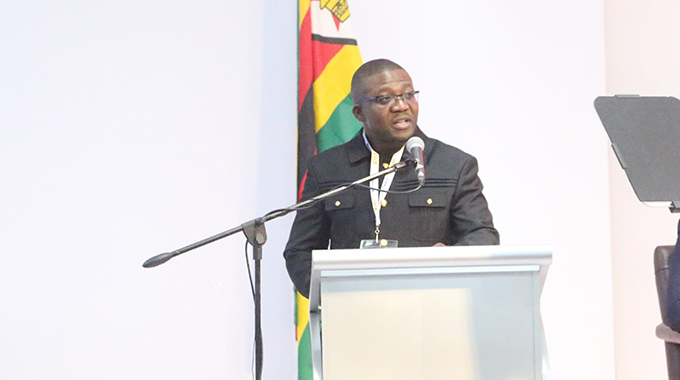EDITORIAL COMMENT: Time to prepare for 2019/20 season is now

SADC, hit by a drought in the 2018/19 farming season that rendered 41,2 million people food insecure, should have a respite as climate experts have forecast sufficient rainfall in the forthcoming growing period.
The regional drought was caused by the El-Nino phenomenon that resulted in normal to below normal rainfall in 13 of Sadc’s 16 member states in the October 2018 to March 2019 period. The dryness was complicated by Tropical Cyclone Itai that was experienced in March in Mozambique, Zimbabwe and Malawi. Similar weather phenomena of weaker impact — tropical cyclones Desmond, Enawo and Kenneth — adversely affected the Comoros, Madagascar and Tanzania as well.
According to the Synthesis Report on the State of Food and Nutrition Security and Vulnerability in Southern Africa food insecurity in the region increased this year by 28 percent and is 7.4 percent higher than it was during the severe El Niño-induced drought of 2016/17.
Individual member states have issued international appeals for food aid. President Mnangagwa recently declared the drought a state of disaster, a declaration that paves way for international development partners to move in with food aid to alleviate the suffering of the resource poor among us. By March next year, some 5,4 million people in the country are likely to be food insecure. Around US$350 million is required to buy food for them.
While climate experts who met at the 23rd Southern African Regional Climate Outlook Forum (Sarcof) in Luanda, Angola, on 28-30 August announced normal to above-normal rainfall in the region between October to March 2020, Lands, Agriculture, Water, Climate and Rural Resettlement Minister, Perrance Shiri said last week that our country might receive normal to below normal rainfall.
Presenting at the Inter Ministerial Dialogue on Climate Change, Lands, Agriculture, Water, Climate and Rural Resettlement Minster Shiri said the seasonal rainfall forecast for October to December 2019 will see Harare, much of Mashonaland East, Mashonaland West, Matabeleland, most parts of Manicaland, Mashonaland Central, North eastern part of Midlands receiving “normal and biased to above normal rains”.
“Masvingo and the extreme southern parts of Manicaland and bulk of Matabeleland South will expect normal to the biased below normal rainfall. From January to March 2020 all areas should expect normal rainfall to below normal,” he said.
A more detailed, country-specific report is expected to be released in Harare today.
According to the Sarcof areas likely to receive normal-to-above-normal rainfall in the last quarter of 2019 are the south-eastern half, easternmost and south-western parts of Angola; Botswana; northern and southernmost parts of the Democratic Republic of Congo (DRC); Eswatini; Lesotho; and southern Malawi. Other areas that are expected to receive higher rainfall are southern Madagascar; Mauritius; central and southern Mozambique; Namibia; South Africa; Seychelles, northern Tanzania, most of Zambia; and Zimbabwe.
The Sadc and Zimbabwean statements released so far suggest that the performance of the rainfall season looks to be mixed thus demand urgent preparations on the part of the farmer, the Government and development partners to swiftly counter the likely impact of below-normal rainfall.
In areas that are likely to receive normal-to-below normal rainfall in the season such as the southern half of Zimbabwe, there is a need to ensure early availability of inputs so that farmers plant early and stand a chance to realise harvests should the rains be at normal to below normal range.
At the same time, we implore farmers to grow drought tolerant crops and short season varieties that can reach maturity before the rains terminate.
In the long run, the Government and farmers themselves should improve the national and farm level irrigation capacity. If they build more dams, drill more boreholes and invest in irrigation infrastructure, they may cushion themselves and the country as a whole against erratic rainfall since farmers would be able to irrigate.
In this vein, we are encouraged by the work that the Government continues to do to boost the national irrigation capacity.
Cabinet yesterday approved a US$51 million facility to be financed by John Deere, an American corporation that manufactures agricultural, construction, and forestry machinery, for the supply of agricultural mechanisation equipment.
Information, Publicity and Broadcasting Services Minister Monica Mutsvangwa said this while presenting the 32nd Cabinet Decision Making Matrix yesterday.
“In a major boost for the Farm Mechanisation Programme, Cabinet approved a US$51 million facility to be financed by John Deere which was presented by the Minister of Lands, Agriculture, Water, Climate and Rural Resettlement (Perrance Shiri),” she said.
“The facility will involve the supply of agricultural mechanisation equipment so as to increase agricultural productivity and viability.
“The equipment to be imported under the scheme includes 80 combine harvesters, 1 300 tractors, 200 disc harrows, 400 planters, 200 seed drills, 100 boom sprayers, 100 tipping trailers and fast-moving spare parts for each of the equipment and machinery.”
Minister Mutsvangwa said the facility will offer loans of between three to five years for participating farmers and will boost Government’s farm mechanisation programme.
“Furthermore, training will be given to farmers so as to guarantee sustainability of the programme. The facility will extend loans of 3 to 5 years to participating farmers from all the country’s eight provinces at a 5 percent interest rate.”
These are more strategies can be useful in assisting growers to navigate the possible challenges that could arise if the Sarcof and Government predictions come to pass this season and similar conditions arise in later seasons.












Comments